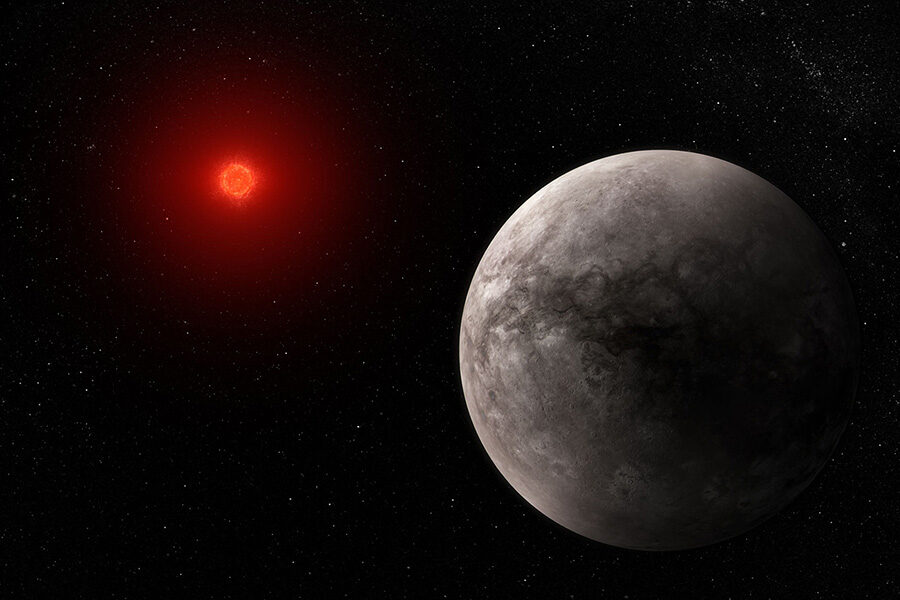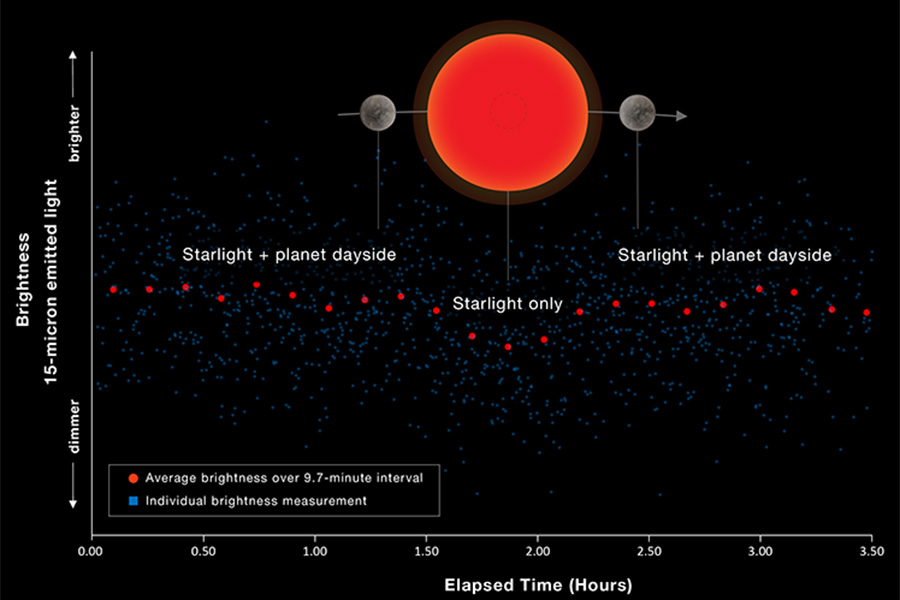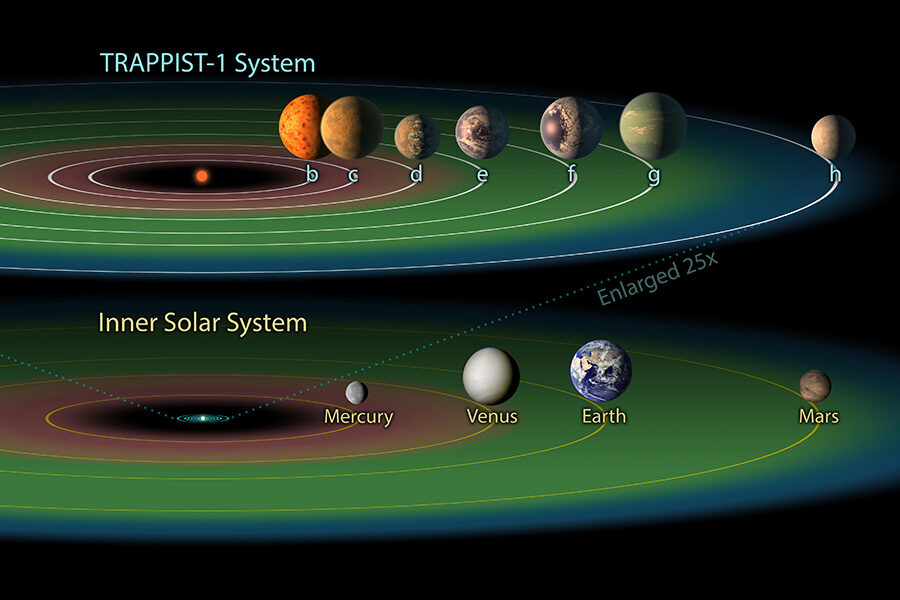The TRAPPIST exoplanets offer the James Webb Space Telescope some of the best opportunities to observe rocky worlds.

Illustration: NASA / ESA / CSA / Joseph Olmsted (STScI); Science: Thomas P. Greene (NASA Ames) / Taylor Bell (BAERI) / Elsa Ducrot (CEA) / Pierre-Olivier Lagage (CEA)
Seven planets circling a red dwarf star 40 light-years away may offer one of our best shots at observing potentially habitable worlds. But the innermost planet, TRAPPIST-1b, has shown its true colors to the James Webb Space Telescope: Astronomers already knew it was located too close to the star to be habitable, but Webb observations revealed that TRAPPIST-1b is too hot to even have an atmosphere.
Thomas Greene (NASA Ames) and colleagues report in Nature a series of observations taken in November and December of last year, catching the planet as it passed behind its star from our point of view. During these secondary eclipses, the light Webb’s Mid-Infrared Instrument collects comes both from the star itself and from starlight reflected off the planet’s dayside. The infrared images track the brightness before and after the planet disappears behind its star, giving a measure of the planet’s temperature: between 480 and 530 kelvin (400 to 500°F).

Illustration: NASA / ESA / CSA / Joseph Olmsted (STScI); Science: Thomas P. Greene (NASA Ames) / Taylor Bell (BAERI) / Elsa Ducrot (CEA) / Pierre-Olivier Lagage (CEA)
Astronomers had expected the planet to be hot. It’s clearly orbiting inside of the star’s so-called habitable zone, a region where the combination of the star’s heat and a reasonable atmosphere would heat the surface so that it could support liquid water. Even assuming an atmosphere, TRAPPIST-1b would have had a surface temperature around 400K (260°F). Any water in its atmosphere would be in vapor form.
The higher heat that Webb measures matches that predicted by models of a dark, airless world. If there were any air present, it would heat up under the star’s light, creating winds that would transfer heat to the night side, thereby cooling the planet.
Previous observations from the Spitzer Space Telescope had only managed an upper limit, so Webb is the first telescope to actually measure the world’s surface temperature.
Besides having no atmosphere, the planet reflects hardly any light. Greene and colleagues point out that leaves plenty of wiggle room for surface composition, which could contain minerals such as anorhite, basalt, enstatite, feldspar olivine, pyroxene, quartz, or saponite.

NASA / JPL-Caltech
It's unclear as yet what this bodes for TRAPPIST-1’s other planets, especially TRAPPIST-1e, f, and g. These three worlds are hypothetically habitable — but only if the red dwarf star’s active youth didn’t strip them of their atmospheres long ago. Besides producing powerful ultraviolet and X-ray flares, stars like TRAPPIST-1 are also brighter when they’re younger, for a period of a billion years or so. Planets now in the habitable zone might once have been too close and hot for water to survive.
TRAPPIST-1 offers astronomers some of the best rocky-planet targets for Webb, and observations of the system’s other worlds are already in the works. As astronomers work their way outward in this system, we’ll find out just how habitable this star’s habitable zone might be.
 0
0









Comments
You must be logged in to post a comment.